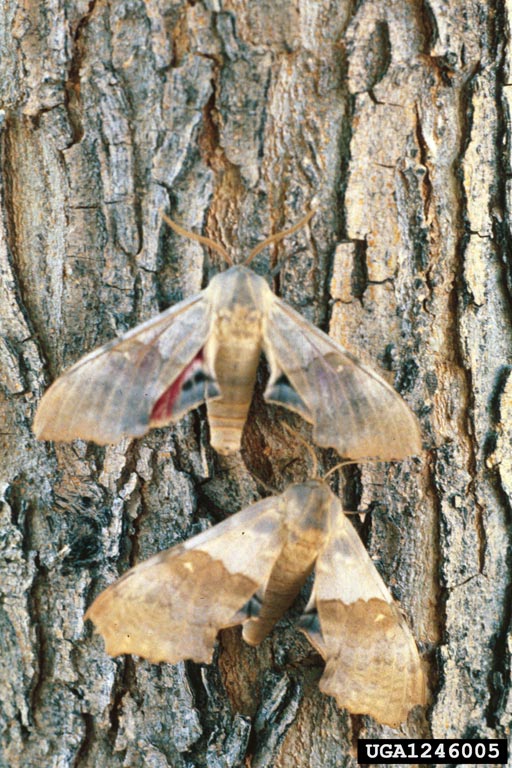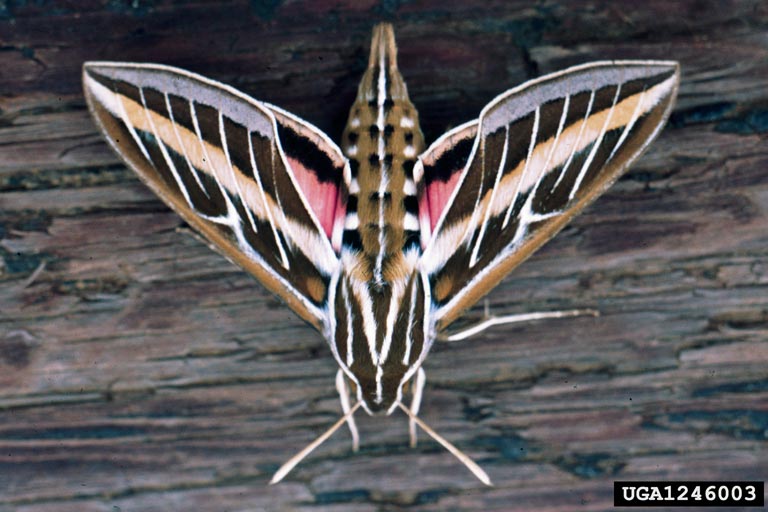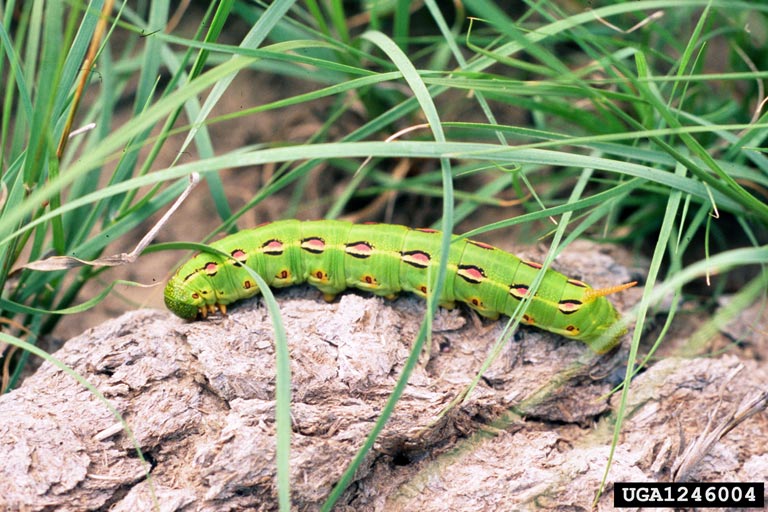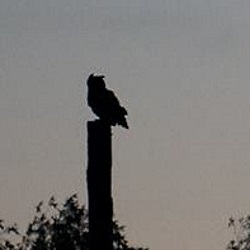
Pachysphinx occidentalis
Courtesy Whitney Cranshaw
Colorado State University
bugwood.org
 White-lined Sphinx
White-lined Sphinx
Hyles lineata
Courtesy Whitney Cranshaw
Colorado State University
bugwood.org
 White-lined Sphinx Caterpillar
White-lined Sphinx Caterpillar
Hyles lineata
Courtesy Whitney Cranshaw
Colorado State University
bugwood.orgI vividly remember the first time I saw one – a small winged creature whirring from flower to flower in the evening light, its long tongue dipping for nectar within tube-shaped blooms. I was mesmerized, and struggled for a closer look.Sphinx Moths
If you’re thinking that I must have seen a hummingbird, you would be making a very common mistake. A mistake, in fact, that has given this critter one of its many nicknames. The winged wonder I saw that summer night was a sphinx moth, also called a hummingbird or hawk moth because of their large size and bird-like characteristics.
In all stages of their life, these insects are large. Caterpillars grow to a robust 4 inches in length and adult wingspans can measure more than 5 inches. Sphinx moths are also some of the fastest insects on earth and have been clocked flying at over 30 miles per hour. Their size, speed, and flying ability reflect those of the hummingbird so closely that they are commonly misidentified.
Sphinx moths are a beloved sight in many Utah gardens. However, they also hold a bit of a devious surprise. The larvae, or caterpillar, of one common species of sphinx moth are well known by vegetable gardeners. They are large and bright green with a distinctive horn near their hind end. Like the adults, these larvae go by many names, the most common being the tomato hornworm. Hornworm caterpillars, unlike their adult counterparts, are not beloved by gardeners. They are voracious beasts with the ability to strip the vegetation off a tomato or pepper plant in one day.
Aside from our garden plants, young hornworms of other species feed on a variety of vegetation including willow, poplar and cottonwood trees. Adult moths rely on a host of flowers such as columbine, honeysuckle, larkspur and evening primrose. Here in Utah you might come across one of a handful of different species in the sphinx moth family including the five-spotted hawk moth and the white-lined sphinx. Look for them in the late summer evenings as daylight begins to fade. But be sure to look twice to avoid mistaking them for something they’re not.
And the next time you find a hornworm on your tomatoes, maybe just relocate the little bugger so that you can enjoy it once metamorphosis changes the beast into a beauty.
For more information and pictures of our native sphinx moths, visit our website at www.wildaboututah.org. Thank you to Rocky Mountain Power Foundation for supporting the research and development of this Wild About Utah topic.
For the Stokes Nature Center and Wild About Utah, this is Andrea Liberatore.
Credits:
Photos: Courtesy Whitney Cranshaw, Colorado State University, Bugwood.org
Images licensed under Creative Commons Attribution 3.0 License
Text: Andrea Liberatore, Stokes Nature Center, logannature.org
Additional Reading:
Cranshaw, W.S. 2007. Hornworms and “Hummingbird” Moths. Colorado State University Fact Sheet 5.517. Found online at: https://www.ext.colostate.edu/pubs/insect/05517.pdf
Buchman, Steve. 2010. Pollinator of the Month: Hawk Moths or Sphinx Moths (Sphingidae). US Forest Service. Found online at: https://www.fs.fed.us/wildflowers/pollinators/pollinator-of-the-month/hawk_moths.shtml





